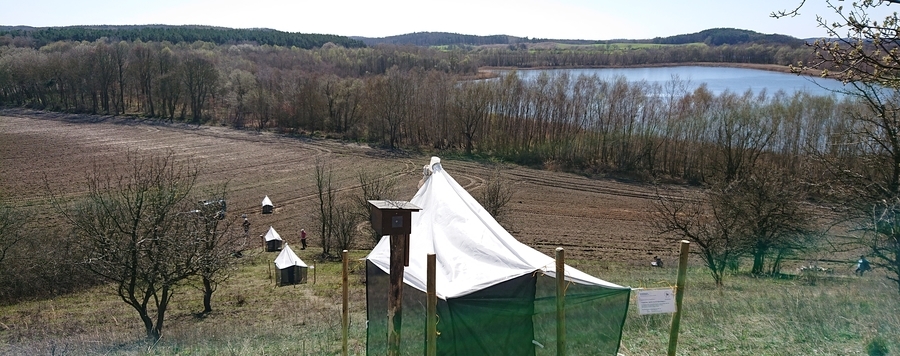



Links
[1] https://bonn.leibniz-lib.de/en/research/research-centres-and-groups
[2] https://bonn.leibniz-lib.de/en/research/research-centers-and-groups/centre-of-taxonomy-and-evolutionary-research
[3] https://bonn.leibniz-lib.de/en/research/research-centers-and-groups/centre-for-molecular-biodiversity-research-zmb
[4] https://bonn.leibniz-lib.de/en/zbm
[5] https://bonn.leibniz-lib.de/en/zbm-news
[6] https://bonn.leibniz-lib.de/en/research/research-centres-and-groups/experimental-applied-ecology
[7] https://bonn.leibniz-lib.de/en/research/research-centers-and-groups/metabarcoding
[8] https://bonn.leibniz-lib.de/en/research/research-centres-and-groups/conservation-ecology
[9] https://bonn.leibniz-lib.de/en/research/research-centres-and-groups/central-research-facilities
[10] https://bonn.leibniz-lib.de/en/research/research-centres-and-groups/junior-research-groups
[11] https://bonn.leibniz-lib.de/en/research/networks
[12] https://bonn.leibniz-lib.de/en/research/education-and-promotion
[13] https://bonn.leibniz-lib.de/en/research/collections
[14] https://bonn.leibniz-lib.de/en/research/projects
[15] https://bonn.leibniz-lib.de/en/research/publications
[16] https://bonn.leibniz-lib.de/en/research/library
[17] https://bonn.leibniz-lib.de/en/research/conferences-and-symposia
[18] https://bonn.leibniz-lib.de/en/research
[19] https://bonn.leibniz-lib.de/en/print/15215
[20] https://bonn.leibniz-lib.de/en/printmail/node/15215
[21] https://bonn.leibniz-lib.de/en/research/research-centres-and-groups/centre-for-biodiversity-monitoring-zbm
[22] https://bonn.leibniz-lib.de/en/research/projects/towards-a-future-sustainable-world-where-climate-biodiversity-natural-resources
[23] https://bonn.leibniz-lib.de/en/research/projects/integrative-analysis-of-the-influence-of-pesticides-and-land-use-on-biodiversity
[24] https://bonn.leibniz-lib.de/en/research/projects/dina-diversity-of-insects-in-nature-protected-areas
[25] https://bonn.leibniz-lib.de/en/research/projects/ammod-a-weatherstation-counting-species-diversity
[26] https://bonn.leibniz-lib.de/en/research/research-centres-and-groups/environmental-genomics
[27] https://bonn.leibniz-lib.de/en/zfmk/livia-schaffler
[28] https://bonn.leibniz-lib.de/en/zfmk/michel-posanski
[29] https://bonn.leibniz-lib.de/en/zfmk/alice-scherges
[30] https://bonn.leibniz-lib.de/en/zfmk/vera-zizka
[31] https://bonn.leibniz-lib.de/en/zfmk/niklas-w-noll
[32] https://bonn.leibniz-lib.de/en/zfmk/sarah-helena-zwilling-sarah-helena-zwilling-thivierge
[33] https://bonn.leibniz-lib.de/en/zfmk/marvin-applegate
[34] https://bonn.leibniz-lib.de/en/zfmk/julian-mews
[35] https://bonn.leibniz-lib.de/en/zfmk/tobias-demand
[36] https://bonn.leibniz-lib.de/en/zfmk/iris-madge-pimentel
[37] https://bonn.leibniz-lib.de/en/research/projects/gibbs-biodiversity-management-in-the-building-materials-industry
[38] https://bonn.leibniz-lib.de/en/zfmk/christoph-scherber
[39] https://bonn.leibniz-lib.de/en/research/projects/microcebus-berthae-survey
[40] https://bonn.leibniz-lib.de/en/research/projects/solbiom
[41] https://bonn.leibniz-lib.de/en/zfmk/j-wolfgang-waegele
[42] https://bonn.leibniz-lib.de/en/research/research-centres-and-groups/conservation-ecology?page=1
[43] https://bonn.leibniz-lib.de/en/research/research-centres-and-groups/conservation-ecology?page=2
[44] https://bonn.leibniz-lib.de/en/node/20697
[45] https://bonn.leibniz-lib.de/en/node/20479
[46] https://bonn.leibniz-lib.de/en/node/20481
[47] https://bonn.leibniz-lib.de/en/node/19759
[48] https://bonn.leibniz-lib.de/en/node/20571
[49] https://bonn.leibniz-lib.de/en/node/20501
[50] https://bonn.leibniz-lib.de/en/node/18915
[51] https://doi.org/10.1101/2022.01.25.477751
[52] https://bonn.leibniz-lib.de/en/node/19239
[53] https://bonn.leibniz-lib.de/en/node/19267
[54] https://bonn.leibniz-lib.de/en/node/19615
[55] https://doi.org/10.1007/s10531-022-02519-1
[56] https://bonn.leibniz-lib.de/en/node/20703
[57] https://doi.org/10.1016/j.tree.2022.06.001
[58] https://bonn.leibniz-lib.de/en/node/19015
[59] https://doi.org/10.1186/s12302-022-00618-y
[60] https://bonn.leibniz-lib.de/en/node/19619
[61] https://bonn.leibniz-lib.de/en/node/16857
[62] https://bonn.leibniz-lib.de/en/node/18141
[63] https://bonn.leibniz-lib.de/en/node/18559
[64] https://bonn.leibniz-lib.de/en/node/17923
[65] https://bonn.leibniz-lib.de/en/node/17891
[66] https://bonn.leibniz-lib.de/en/node/17643
[67] https://link.springer.com/content/pdf/10.1007/s10531-021-02209-4.pdf
[68] https://bonn.leibniz-lib.de/en/node/17129
[69] https://www.frontiersin.org/articles/10.3389/fevo.2021.585781/full
[70] https://bonn.leibniz-lib.de/en/taxonomy/term/1707